
Industrial conglomerate Honeywell (NASDAQ: HON) reported Q4 CY2024 results topping the market’s revenue expectations, with sales up 6.9% year on year to $10.09 billion. On the other hand, the company’s full-year revenue guidance of $40.1 billion at the midpoint came in 2.8% below analysts’ estimates. Its non-GAAP profit of $2.47 per share was 6.4% above analysts’ consensus estimates.
Is now the time to buy Honeywell? Find out by accessing our full research report, it’s free.
Honeywell (HON) Q4 CY2024 Highlights:
- Revenue: $10.09 billion vs analyst estimates of $9.84 billion (6.9% year-on-year growth, 2.5% beat)
- Adjusted EPS: $2.47 vs analyst estimates of $2.32 (6.4% beat)
- Management’s revenue guidance for the upcoming financial year 2025 is $40.1 billion at the midpoint, missing analyst estimates by 2.8% and implying 4.2% growth (vs 5% in FY2024)
- Adjusted EPS guidance for the upcoming financial year 2025 is $10.30 at the midpoint, missing analyst estimates by 5.6%
- Operating Margin: 17.3%, in line with the same quarter last year
- Free Cash Flow Margin: 18.7%, down from 27.4% in the same quarter last year
- Organic Revenue rose 2% year on year, in line with the same quarter last year
- Market Capitalization: $144.6 billion
"We delivered a strong end to a successful year, exceeding the high end of our guidance for fourth quarter sales and adjusted earnings per share1 while navigating a dynamic operating environment," said Vimal Kapur, chairman and CEO of Honeywell.
Company Overview
Originally founded in 1906 as a thermostat company, Honeywell (NASDAQ: HON) is a multinational conglomerate known for its aerospace systems, building technologies, performance materials, and safety and productivity solutions.
General Industrial Machinery
Automation that increases efficiency and connected equipment that collects analyzable data have been trending, creating new demand for general industrial machinery companies. Those who innovate and create digitized solutions can spur sales and speed up replacement cycles, but all general industrial machinery companies are still at the whim of economic cycles. Consumer spending and interest rates, for example, can greatly impact the industrial production that drives demand for these companies’ offerings.
Sales Growth
Reviewing a company’s long-term sales performance reveals insights into its quality. Any business can have short-term success, but a top-tier one grows for years. Unfortunately, Honeywell struggled to consistently increase demand as its $38.5 billion of sales for the trailing 12 months was close to its revenue five years ago. This was below our standards and is a sign of lacking business quality.
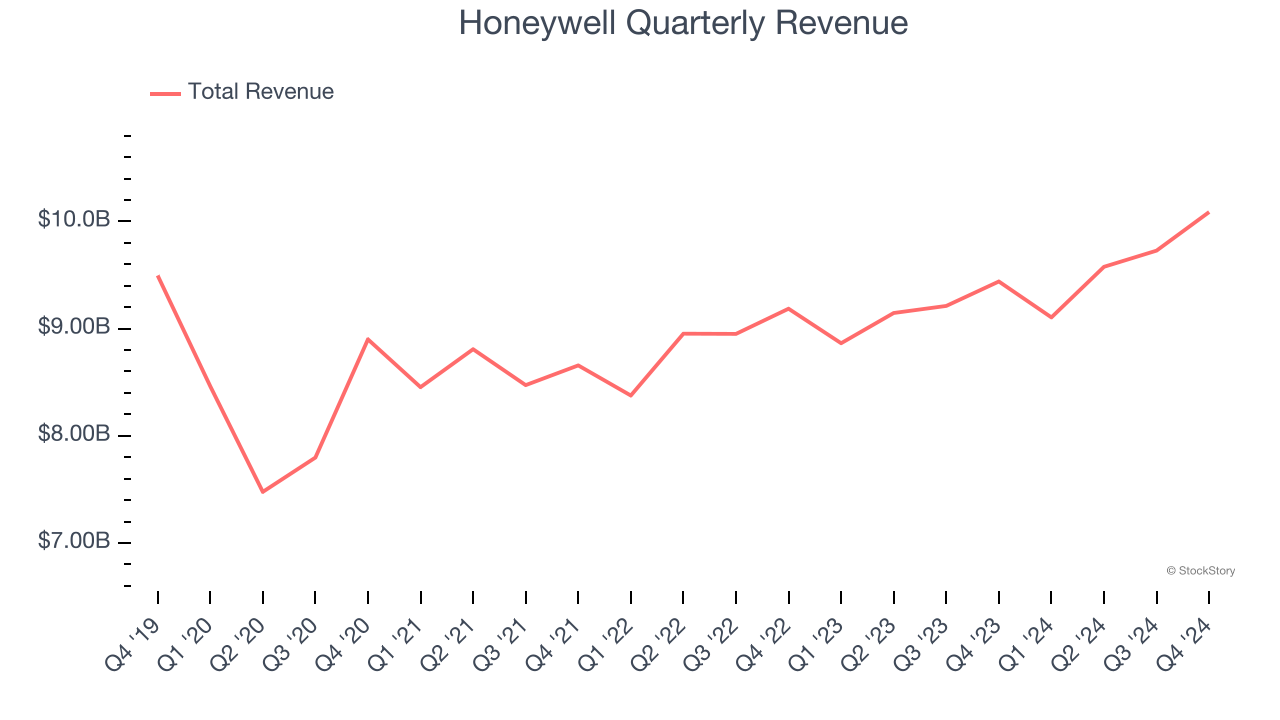
Long-term growth is the most important, but within industrials, a half-decade historical view may miss new industry trends or demand cycles. Honeywell’s annualized revenue growth of 4.2% over the last two years is above its five-year trend, but we were still disappointed by the results. 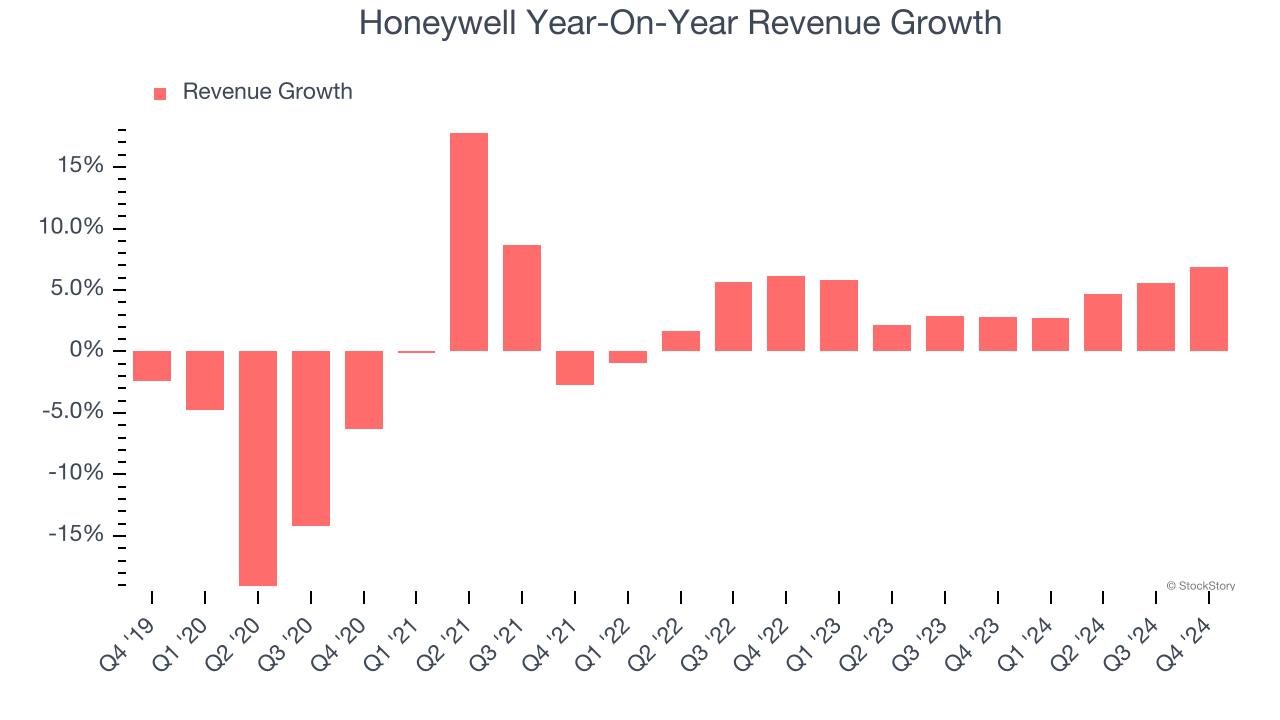
Honeywell also reports organic revenue, which strips out one-time events like acquisitions and currency fluctuations that don’t accurately reflect its fundamentals. Over the last two years, Honeywell’s organic revenue averaged 3.4% year-on-year growth. Because this number aligns with its normal revenue growth, we can see the company’s core operations (not acquisitions and divestitures) drove most of its results. 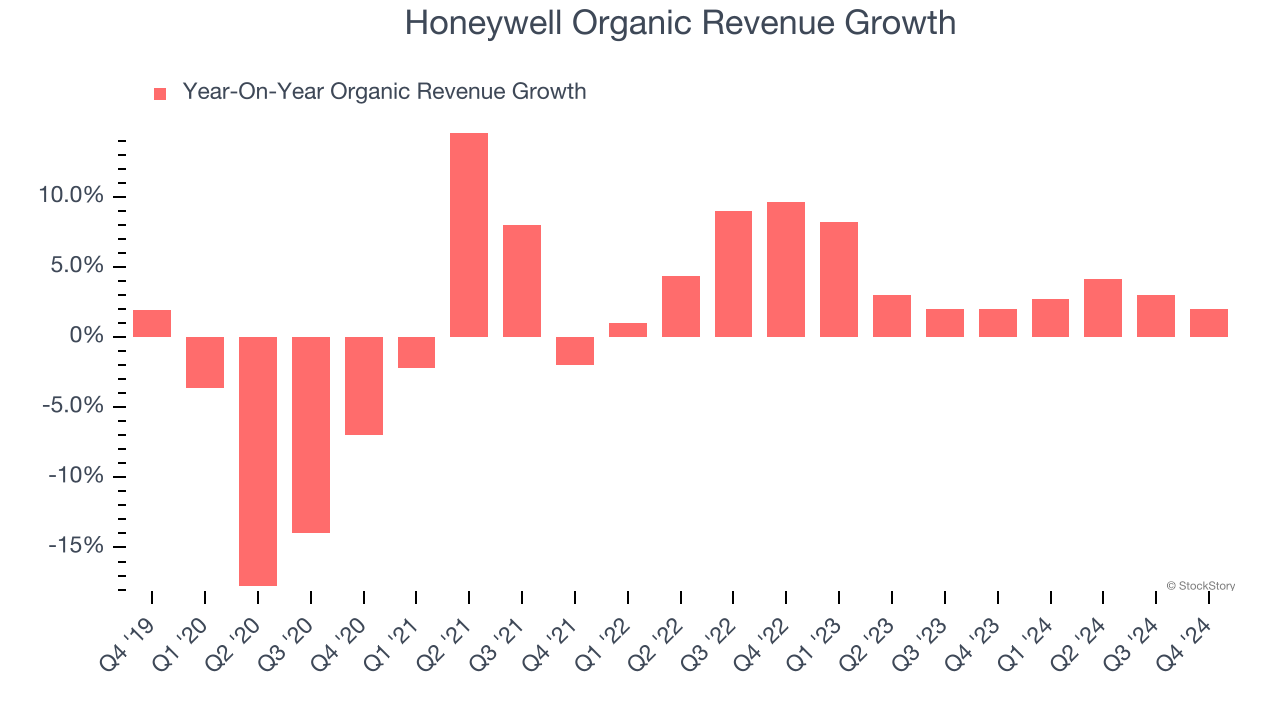
This quarter, Honeywell reported year-on-year revenue growth of 6.9%, and its $10.09 billion of revenue exceeded Wall Street’s estimates by 2.5%.
Looking ahead, sell-side analysts expect revenue to grow 7.4% over the next 12 months. While this projection indicates its newer products and services will catalyze better top-line performance, it is still below the sector average.
Here at StockStory, we certainly understand the potential of thematic investing. Diverse winners from Microsoft (MSFT) to Alphabet (GOOG), Coca-Cola (KO) to Monster Beverage (MNST) could all have been identified as promising growth stories with a megatrend driving the growth. So, in that spirit, we’ve identified a relatively under-the-radar profitable growth stock benefiting from the rise of AI, available to you FREE via this link.
Operating Margin
Honeywell has been a well-oiled machine over the last five years. It demonstrated elite profitability for an industrials business, boasting an average operating margin of 20.7%. This result isn’t too surprising as its gross margin gives it a favorable starting point.
Analyzing the trend in its profitability, Honeywell’s operating margin rose by 1.7 percentage points over the last five years, showing its efficiency has improved.
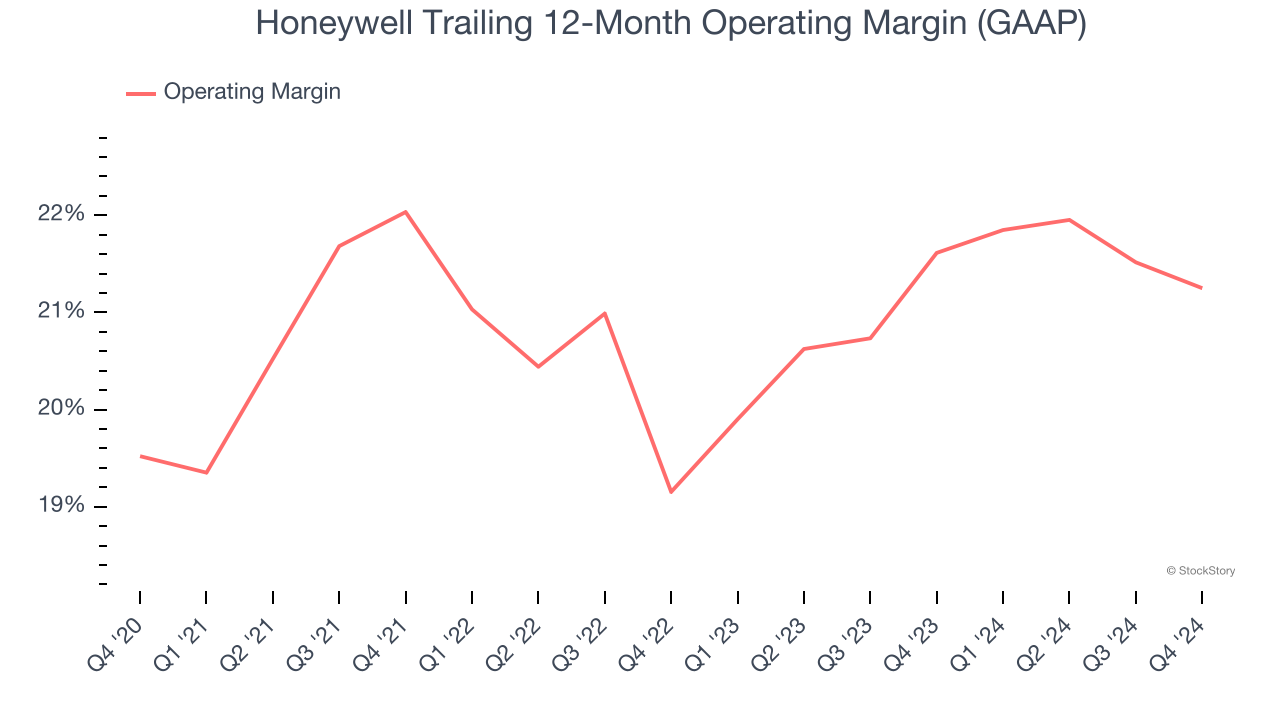
In Q4, Honeywell generated an operating profit margin of 17.3%, in line with the same quarter last year. This indicates the company’s cost structure has recently been stable.
Earnings Per Share
Revenue trends explain a company’s historical growth, but the long-term change in earnings per share (EPS) points to the profitability of that growth – for example, a company could inflate its sales through excessive spending on advertising and promotions.
Honeywell’s EPS grew at a weak 4% compounded annual growth rate over the last five years. On the bright side, this performance was better than its flat revenue and tells us management responded to softer demand by adapting its cost structure.
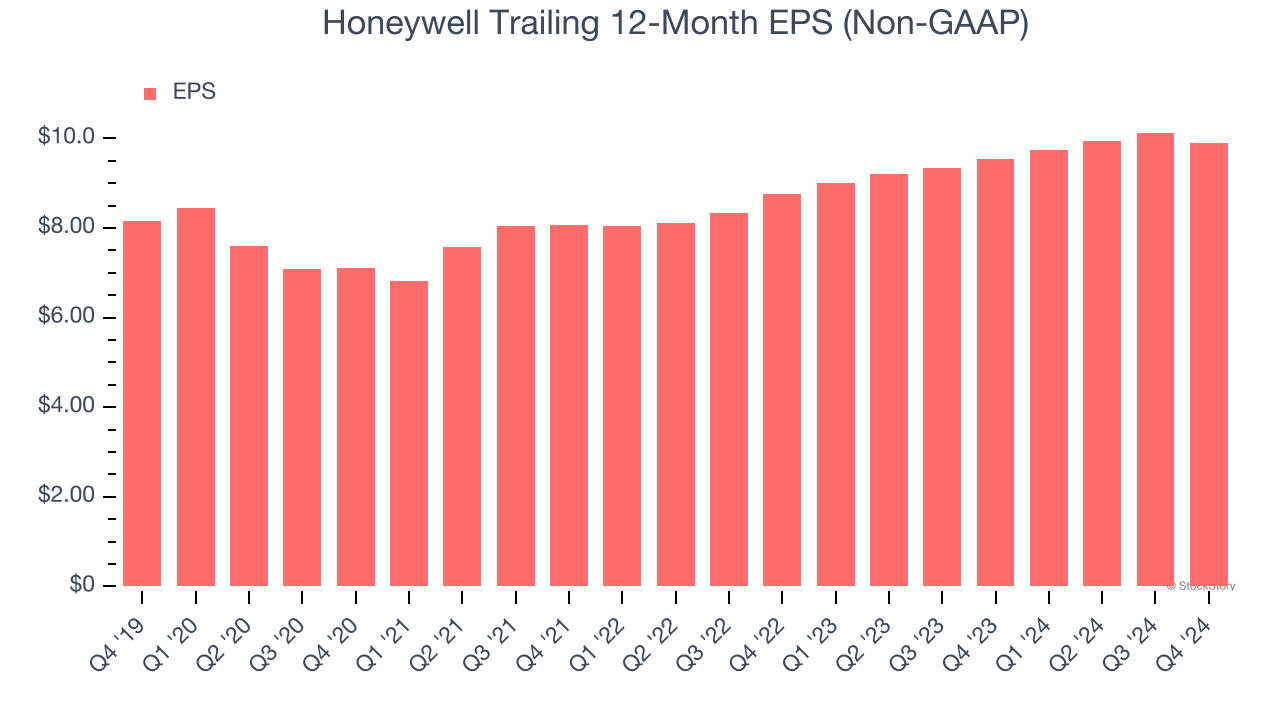
We can take a deeper look into Honeywell’s earnings to better understand the drivers of its performance. As we mentioned earlier, Honeywell’s operating margin was flat this quarter but expanded by 1.7 percentage points over the last five years. On top of that, its share count shrank by 9.4%. These are positive signs for shareholders because improving profitability and share buybacks turbocharge EPS growth relative to revenue growth. 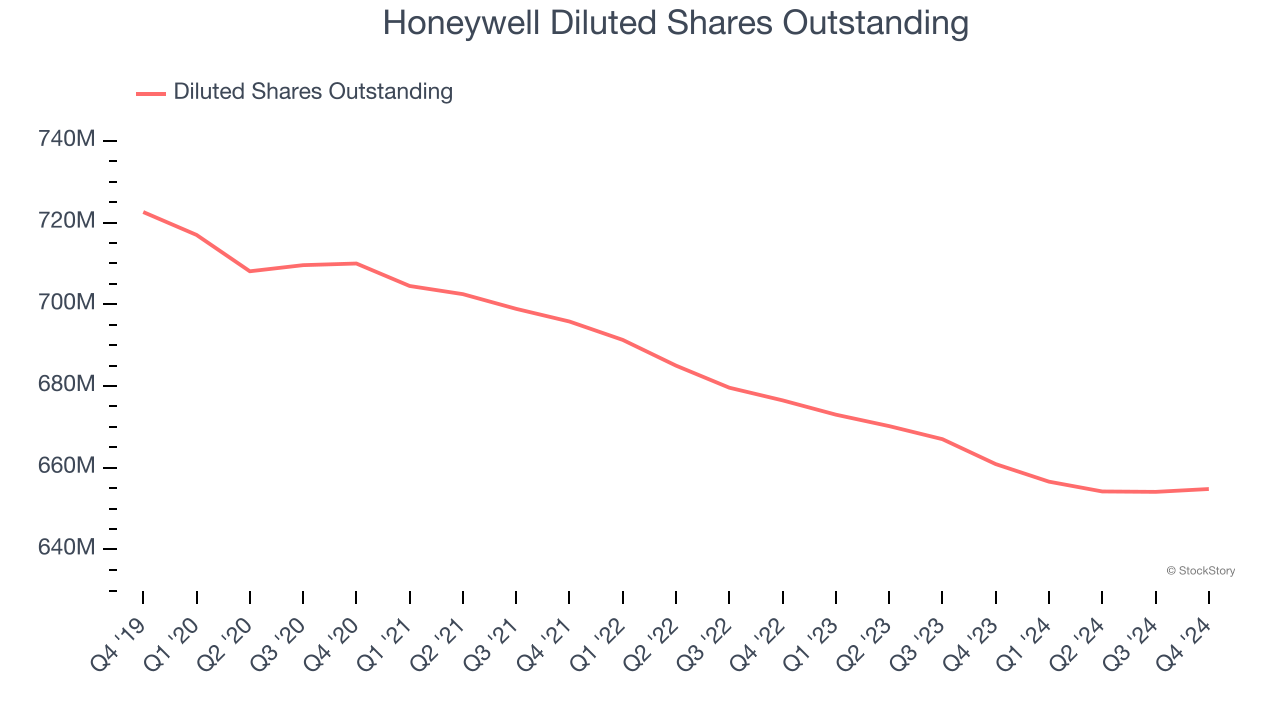
Like with revenue, we analyze EPS over a shorter period to see if we are missing a change in the business.
For Honeywell, its two-year annual EPS growth of 6.4% was higher than its five-year trend. Accelerating earnings growth is almost always an encouraging data point.
In Q4, Honeywell reported EPS at $2.47, down from $2.69 in the same quarter last year. Despite falling year on year, this print beat analysts’ estimates by 6.4%. Over the next 12 months, Wall Street expects Honeywell’s full-year EPS of $9.91 to grow 9.8%.
Key Takeaways from Honeywell’s Q4 Results
We enjoyed seeing Honeywell exceed analysts’ revenue expectations this quarter. We were also glad its organic revenue outperformed Wall Street’s estimates. On the other hand, its full-year EPS guidance missed significantly and its full-year revenue guidance fell short of Wall Street’s estimates. Overall, this quarter could have been better. The stock remained flat at $223.02 immediately following the results.
So do we think Honeywell is an attractive buy at the current price? The latest quarter does matter, but not nearly as much as longer-term fundamentals and valuation, when deciding if the stock is a buy. We cover that in our actionable full research report which you can read here, it’s free.



